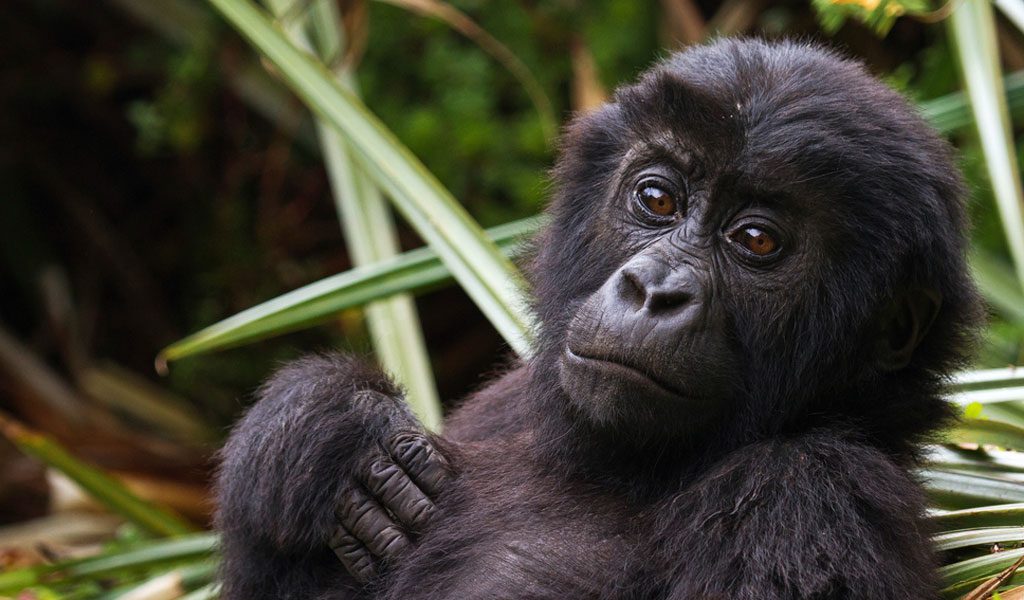The Eastern Lowland
Gorilla or Grauer's
gorilla is a subspecies
of eastern gorilla
endemic to the
mountainous forest of
eastern Democratic
Republic of the Congo.
Important populations
of this gorilla live in
the Kahuzi-Biega and
Maiko National Parks
and their adjacent
forests. It is the largest
of the four gorilla
subspecies. It has a jet
black coat just like the mountain gorilla, although the hair is shorter on the head and body. As the males mature their coat starts to turn grey just like other gorilla which gives them the "silverback" name. There are far fewer eastern lowland gorillas compared to western lowland gorillas. According to a 2004 report there were only about 5,000 eastern lowland gorillas in the wild, and down to fewer than 3,800 in 2016, compared to over 100,000 western lowland gorillas.
The Eastern Lowland has the widest altitudinal range of any of the gorilla subspecies, being found in mountainous, transitional and lowland tropical forests. One of the most studied eastern lowland gorilla population lives in the highlands of Kahuzi- Biega, where habitats vary between dense primary forests to moderately moist woodland, to Cyperus swamp and peat bog.
https://youtu.be/08HLFxk9rrY
Gorillas play an important role in the tropical forest in which they live. they help disperse seeds throughout the forest and create places where seedlings can grow and replenish the forest. This is vital to the other animals that share their habitat, as well as humans who live in and around the forest and rely on that regrowth to sustain their environments.
The eastern lowland gorillas shows a preference for regenerating vegetation associated with abandoned villages and fields. Farmers who have come in contact with gorillas in their plantations have killed the gorilla and obtained a double benefit, protecting their crop and using the meat of the gorilla to sell at the market. This leads to the primary cause of the decline in eastern lowland gorilla populations is poaching for meat, known as bushmeat. It is eaten by displaced peoples residing in the region affected by the civil war, militias groups and loggers and miners.
Conjour reached out to the Dian Fossey fund who have been working to conserve primates in their natural habitat for the last 50 years. The Fossy Fund has been working closely with the local community to track and monitor Grauer's gorillas. They built a permanent field station in the heart of the animals territory. Here, four teams of gorilla trackers are permanently based to monitor the gorillas.
5 ways to help
1. Spread awareness of the poaching that is happening to these gorillas.
2. Donate money to Fauna & Flora International (FFI) that funds the rangers that monitor their habitats.
3. Donate to the World Wild Life Foundation.
4. Symbolically adopt a gorilla on WWF.
5. Promote awareness on social media platform on the current status of these gorillas.

No comments:
Post a Comment